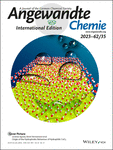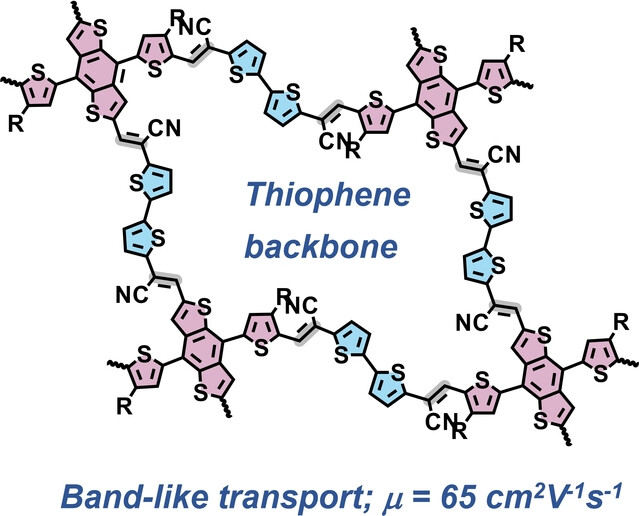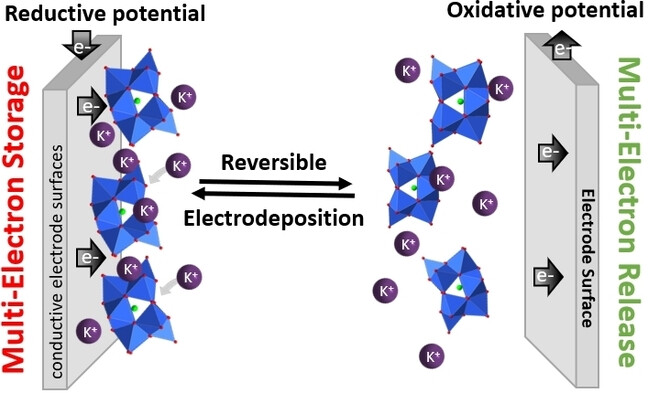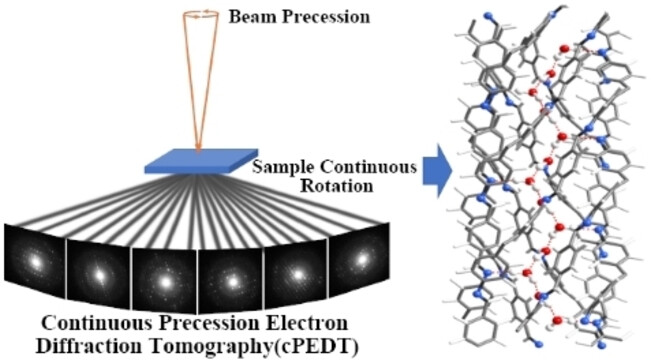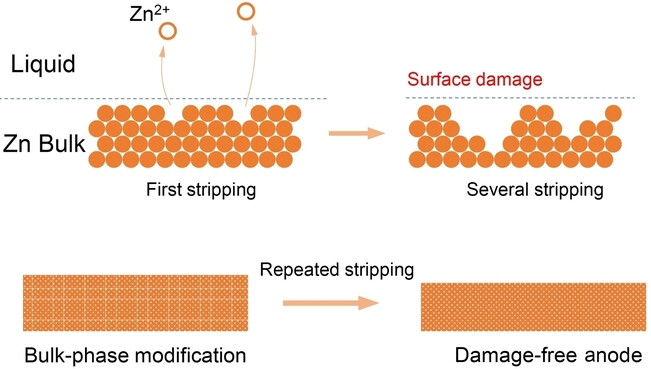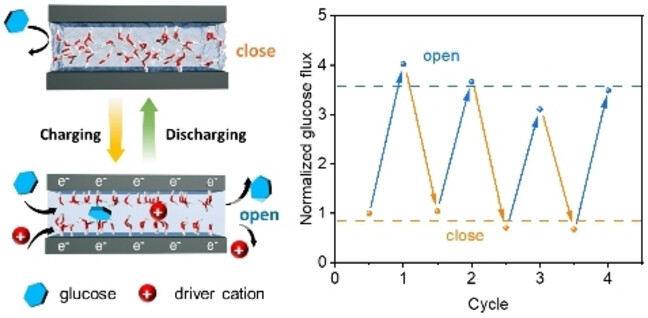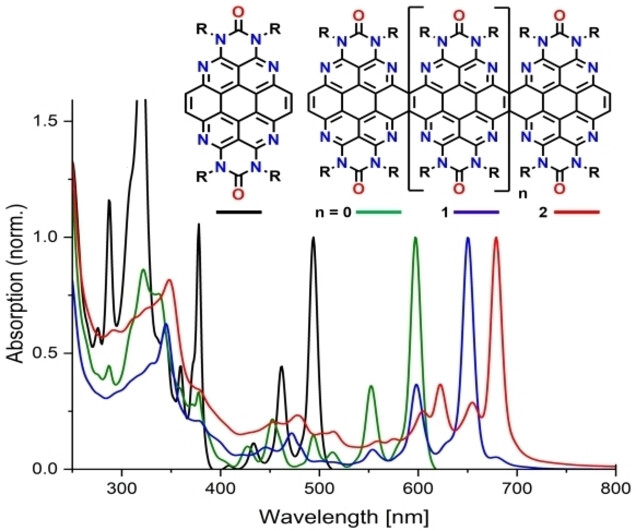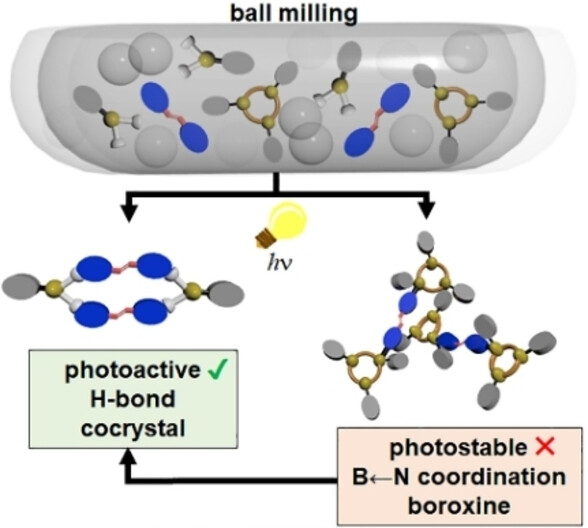Journal list menu
Export Citations
Download PDFs
Covers
Cover Picture: Origin of the Hydrophobic Behaviour of Hydrophilic CeO2 (Angew. Chem. Int. Ed. 35/2023)
- First Published: 14 July 2023
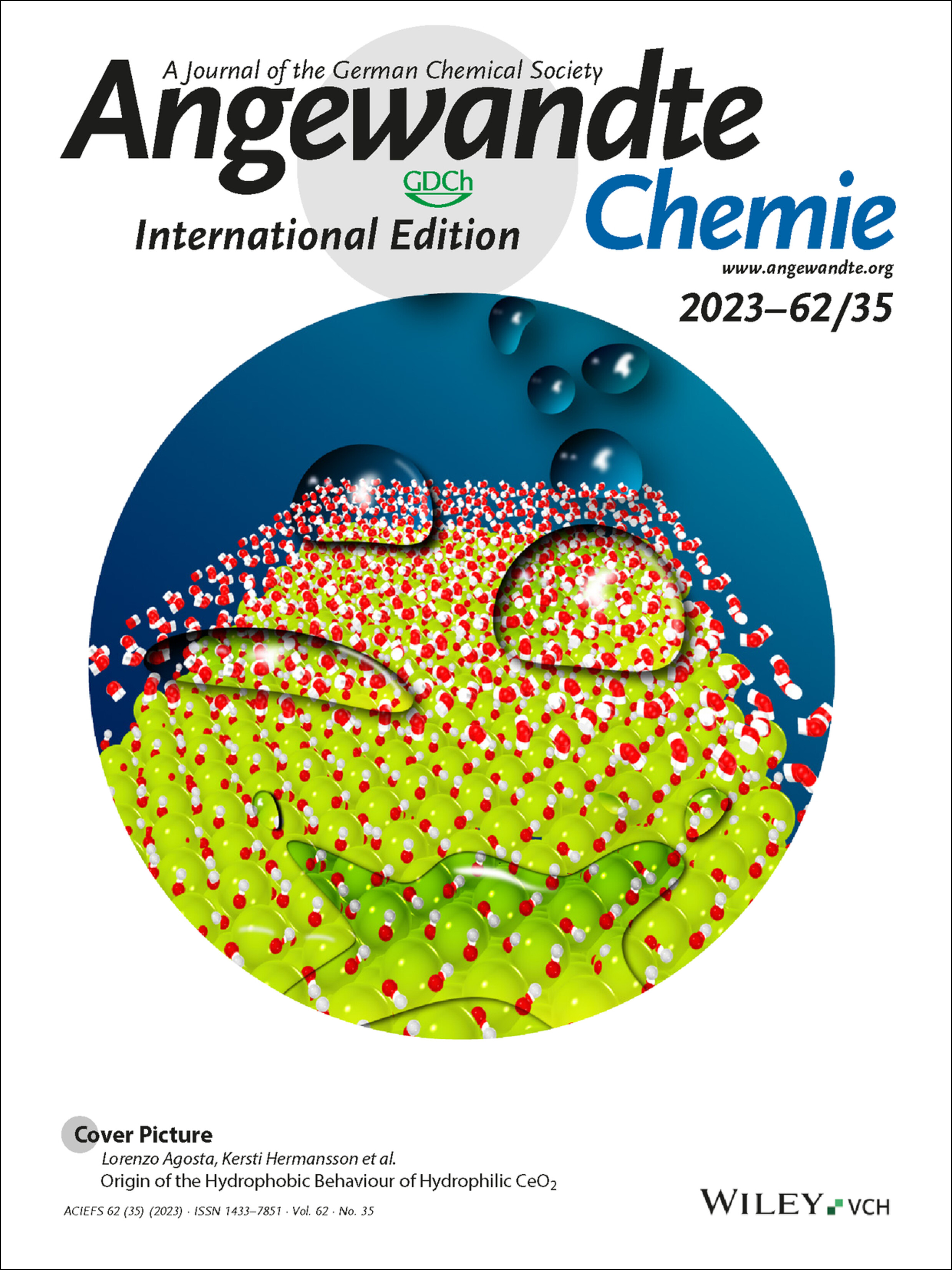
The CeO2 (100) surface , despite its strongly hydrophilic nature, exhibits hydrophobic behaviour when immersed in water. This effect is induced by the first water layer that is in immediate contact with the hydroxylated CeO2 (100) surface. This ordered water layer creates a key-lock H-bond pattern with the underlying surface hydroxyl groups, hindering the interactions with liquid water. The hydrophobicity is manifested by a measurable water contact angle and a considerable diffusion enhancement of the confined liquid water as compared with bulk water, as reported by Lorenzo Agosta, Kersti Hermansson et al. in their Communication (e202303910). We acknowledge Virginia Carnevali for her help with the cover image.
Inside Cover: A Supported Catalyst that Enables the Synthesis of Colorless CO2-Polyols with Ultra-Low Molecular Weight (Angew. Chem. Int. Ed. 35/2023)
- First Published: 20 June 2023
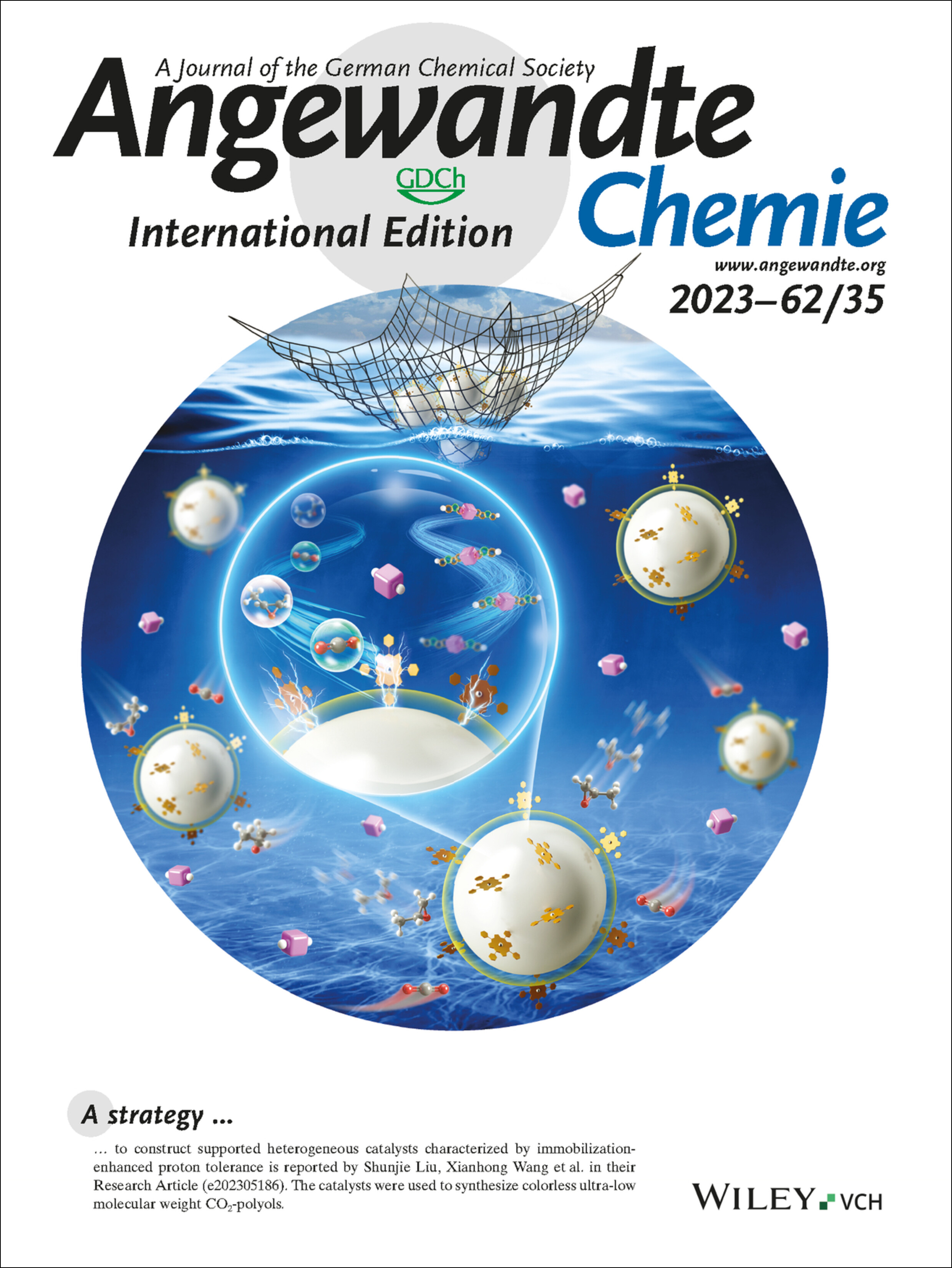
A strategy to construct supported heterogeneous catalysts characterized by immobilization-enhanced proton tolerance is reported by Shunjie Liu, Xianhong Wang et al. in their Research Article (e202305186). The catalysts were used to synthesize colorless ultra-low molecular weight CO2-polyols.
Inside Back Cover: Integrated Soft Porosity and Electrical Properties of Conductive-on-Insulating Metal-Organic Framework Nanocrystals (Angew. Chem. Int. Ed. 35/2023)
- First Published: 14 July 2023
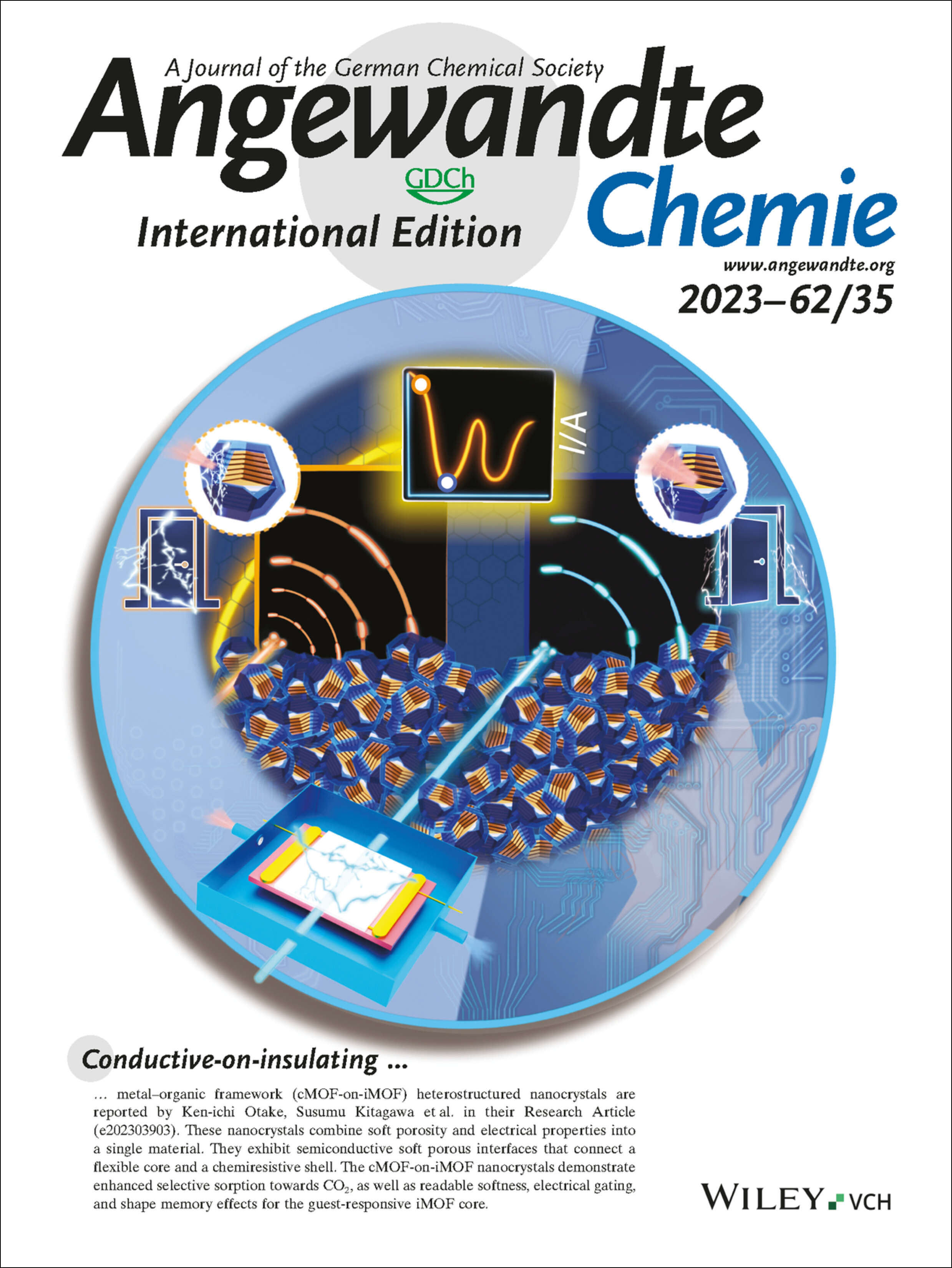
Conductive-on-insulating metal–organic framework (cMOF-on-iMOF) heterostructured nanocrystals are reported by Ken-ichi Otake, Susumu Kitagawa et al. in their Research Article (e202303903). These nanocrystals combine soft porosity and electrical properties into a single material. They exhibit semiconductive soft porous interfaces that connect a flexible core and a chemiresistive shell. The cMOF-on-iMOF nanocrystals demonstrate enhanced selective sorption towards CO2, as well as readable softness, electrical gating, and shape memory effects for the guest-responsive iMOF core.
Back Cover: A Photosensitizing Metal–Organic Framework as a Tandem Reaction Catalyst for Primary Alcohols from Terminal Alkenes and Alkynes (Angew. Chem. Int. Ed. 35/2023)
- First Published: 19 July 2023
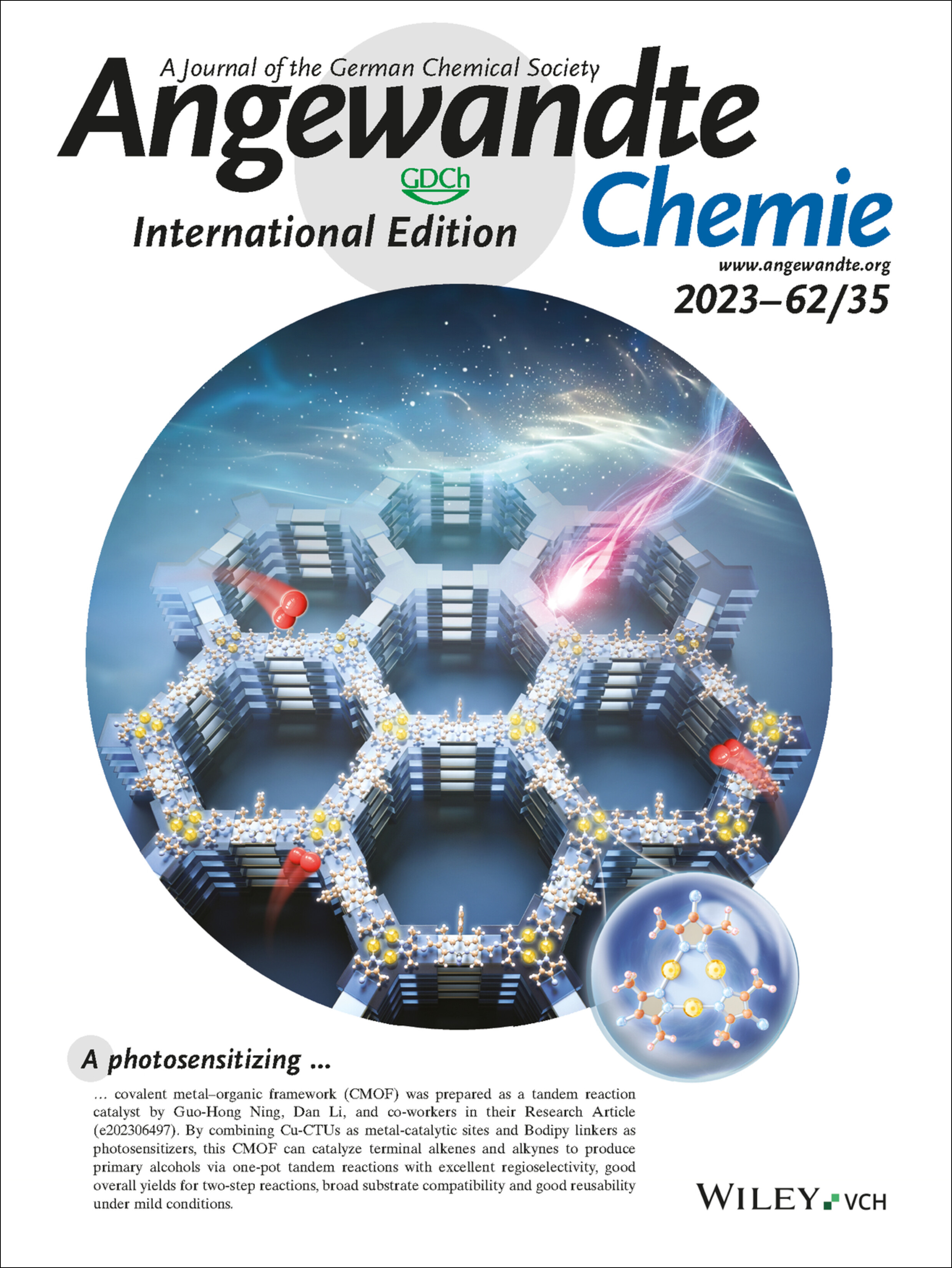
A photosensitizing covalent metal–organic framework (CMOF) was prepared as a tandem reaction catalyst by Guo-Hong Ning, Dan Li, and co-workers in their Research Article (e202306497). By combining Cu-CTUs as metal-catalytic sites and Bodipy linkers as photosensitizers, this CMOF can catalyze terminal alkenes and alkynes to produce primary alcohols via one-pot tandem reactions with excellent regioselectivity, good overall yields for two-step reactions, broad substrate compatibility and good reusability under mild conditions.
Frontispiece
Frontispiece: Analysis of the Dynamics of the Human Growth Hormone Secretagogue Receptor Reveals Insights into the Energy Landscape of the Molecule
- First Published: 23 August 2023
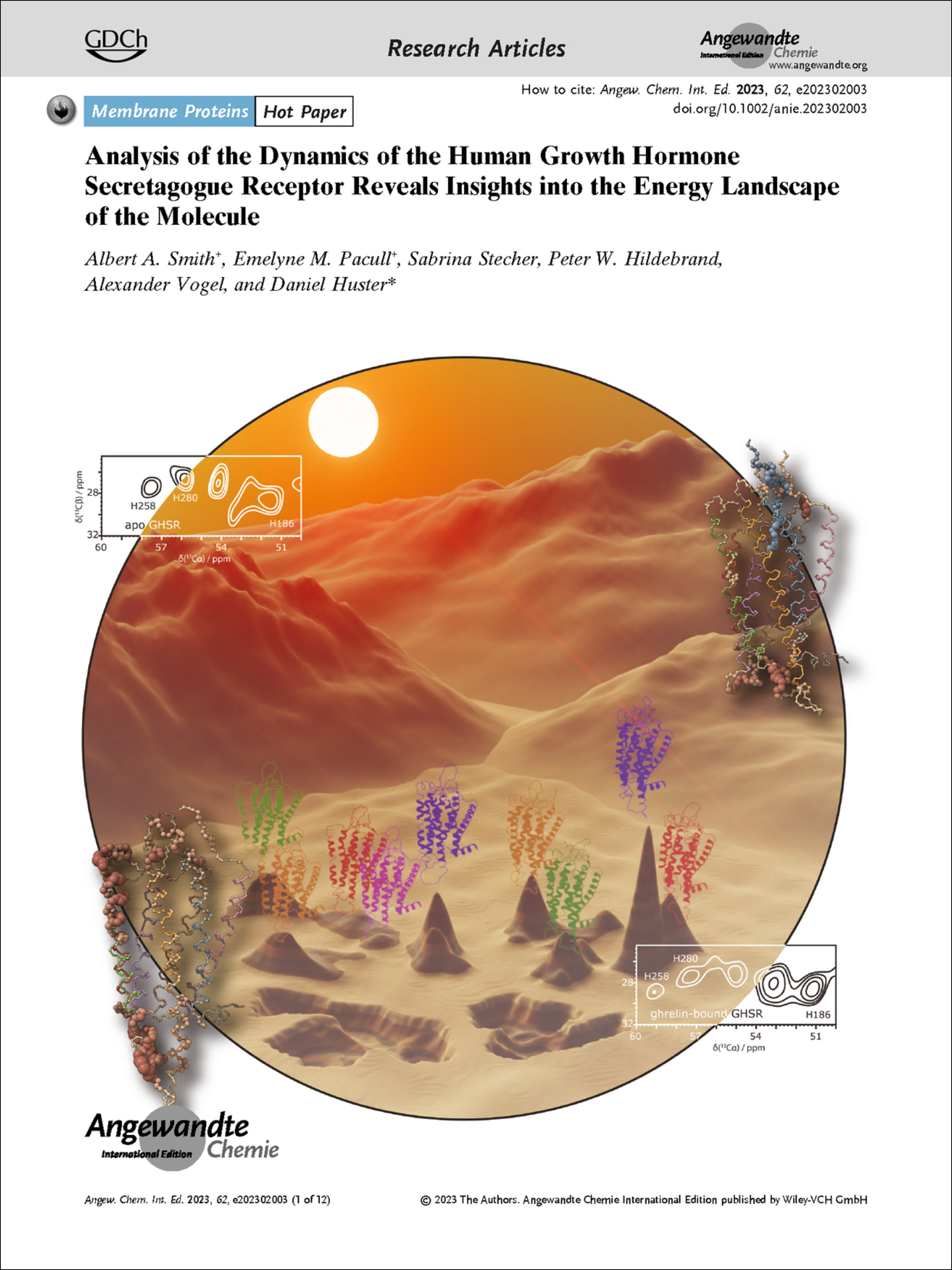
Membrane Proteins. In their Research Article (e202302003), Daniel Huster et al. analyze the dynamics of the human growth hormone secretagogue receptor. The study reveals insights into the energy landscape of the molecule.
Frontispiece: Observing the Entry Events of a Titanium-Based Photoredox Catalytic Cycle in Real Time
- First Published: 23 August 2023
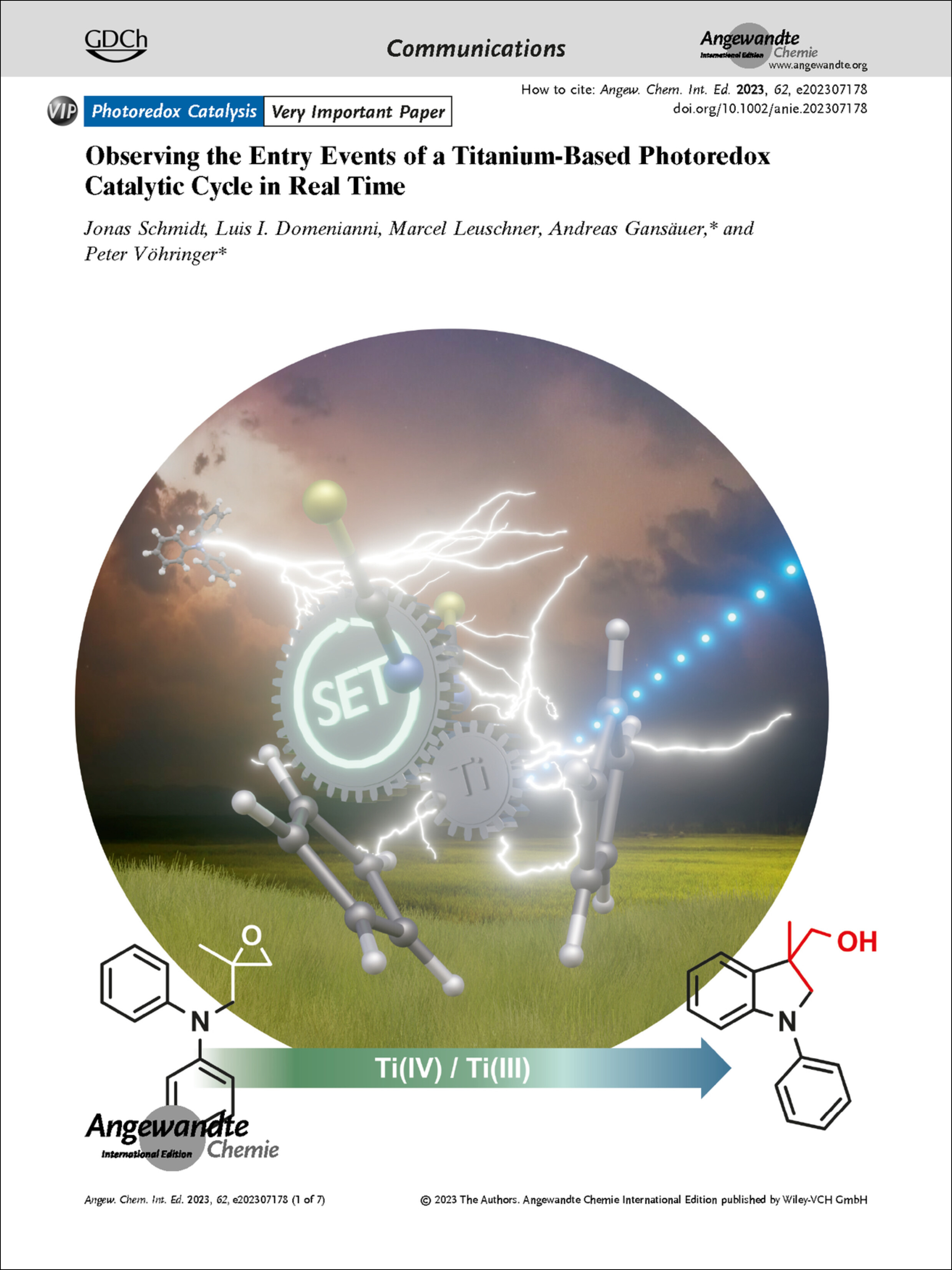
Time-Resolved Spectroscopy. In their Communication (e202307178), Andreas Gansäuer, Peter Vöhringer et al. report time-resolved fluorescence and ultrafast mid-infrared spectroscopies to study the primary events of entry into a sustainable photoredox-catalytic cycle utilizing a titanium(IV) photocatalyst.
Graphical Abstract
Team Profile
Driving the Transformation to Digital Catalysis
- First Published: 10 July 2023

“Sharing our data has created a unique culture for scientific work in the department and has bonded the staff into a strong team … The exciting aspect of this project is that we can contribute to making the workflow in catalysis research more effective by moving to different working methods by defining Standard Operating Procedures …“ Find out more about FAIR data in catalysis research at the Department of Inorganic Chemistry at the Fritz-Haber-Institut (FHI) der Max-Planck-Gesellschaft.
Introducing …
Ba L. Tran
- First Published: 06 July 2023

If I could be granted a superpower, it would be teleportation because I could attend any seminar or conference in the world while waiting for reactions and still be home for dinner … My favorite piece of research is the reductive cleavage of dinitrogen by molybdenum trisanilide.” Find out more about Ba L. Tran in his Introducing … Profile.
Minireviews
Reactive Intermediates
Diazoalkenes: From an Elusive Intermediate to a Stable Substance Class in Organic Chemistry
- First Published: 24 April 2023
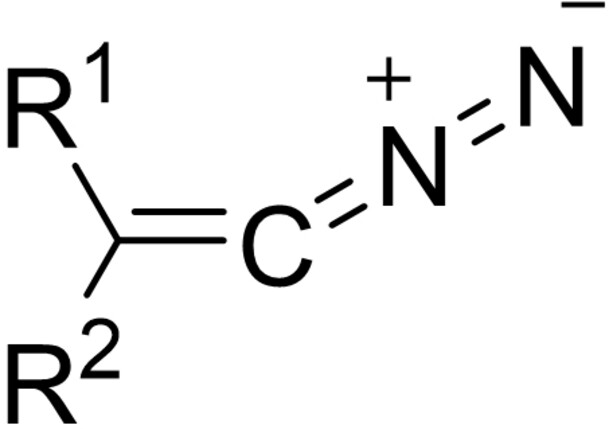
Early discoveries of diazoalkenes (R2C=C=N2) in organic synthesis and the identification of room-temperature-stable diazoalkenes since 2021 are summarized in this Minireview. The synthesis, properties, and reactivity of this novel molecule class are presented, and its use in organic synthesis, main-group, and transition-metal chemistry highlighted.
Fluorescent Probes
When Weak Is Strong: A Plea for Low-Affinity Binders for Optical Microscopy
- First Published: 09 May 2023
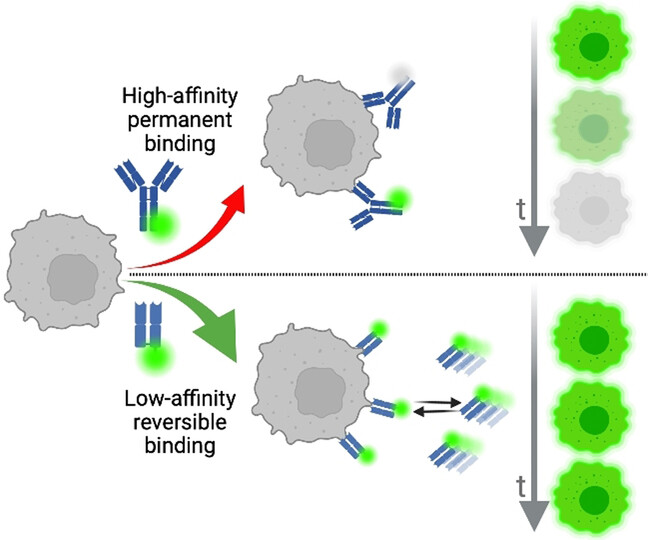
Protein labeling is a cornerstone of fluorescence microscopy. This is achieved using covalent or high-affinity target labels, which leads to a loss in fluorescence signal with time. Here, we highlight the new avenue of using reversible fluorophore labels, which exhibit a low binding affinity to their target and constantly “renew” the fluorescence signal. This enables novel biophysical applications across imaging platforms.
Reviews
Water Desalination
Electrode Materials for Desalination of Water via Capacitive Deionization
- First Published: 13 April 2023
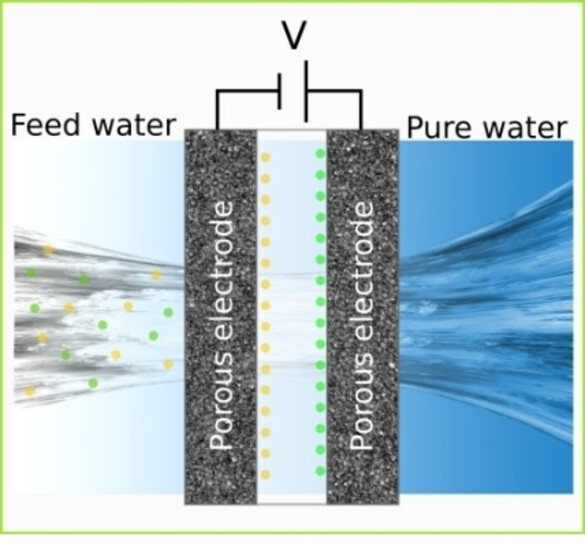
This review offers a detailed overview of the porous electrode materials utilized in CDI and mCDI for water desalination. While being an efficient and energy economical process, CDI and mCDI face certain challenges concerning their relatively low salt removal capacity and parasitic reactions. To address these issues, this review discusses various cell architectures, electrode materials, and the use of standard experimental parameters that aim to enhance desalination performance.
Ferroptosis
Ferroptosis Detection: From Approaches to Applications
- First Published: 24 February 2023
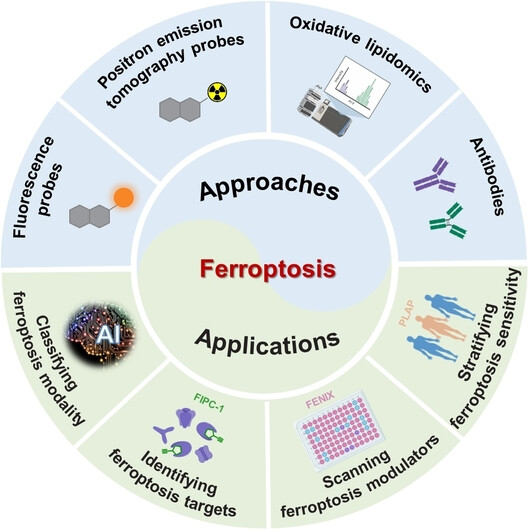
We systematically summarize the ferroptosis detection approaches for subcellular organelles, biological events, and chemical markers, providing a multi-scale perspective on the regulation of the molecular machinery of ferroptosis. Moreover, we highlight the potential of advanced applications that integrate ferroptosis detection techniques with multifunctional platforms. The development of these applications holds great promise in promoting the transition of ferroptosis research from bench to bedside.
Research Articles
Membrane Proteins | Hot Paper
Analysis of the Dynamics of the Human Growth Hormone Secretagogue Receptor Reveals Insights into the Energy Landscape of the Molecule
- First Published: 19 May 2023
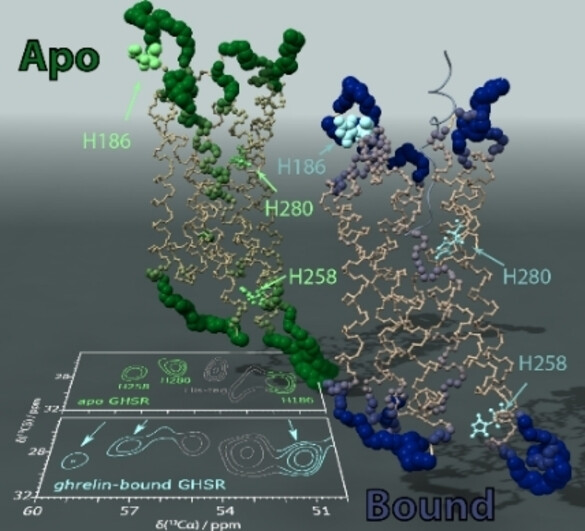
The total amplitude of reorientational motion extracted from MD is plotted on the GHSR molecule for apo (inactive, left) and ghrelin-bound (active, right) GHSR. Decrease in dynamics at histidine residues H2586.30 and H2806.52 upon ghrelin-binding shifts the NMR resonances to higher ppm values, whereas H186ECL2 sees smaller changes in the total motion and correspondingly has a smaller change in chemical shift.
Graphene Nanostructures | Hot Paper
Bottom-up Solution Synthesis of Graphene Nanoribbons with Precisely Engineered Nanopores
- First Published: 19 June 2023

Porous graphene nanoribbon (pGNR) has been obtained for the first time by bottom-up solution-phase synthesis. The key design is to use the tailor-made polyphenylene precursor bearing pre-installed hexagonal nanopores, which allows us to access the pGNR with fully conjugated backbone and precisely embedded nanopores. The resultant pGNR presents enlarged band gap and enhanced liquid-phase processability, compared to its nonporous counterparts.
2D Materials | Hot Paper
A Thiophene Backbone Enables Two-Dimensional Poly(arylene vinylene)s with High Charge Carrier Mobility
- First Published: 04 June 2023
Polyoxometalates
Reversible Electrodeposition of Potassium-bridged Molecular Vanadium Oxides: A New Approach Towards Multi-Electron Storage
- First Published: 22 May 2023
Organocatalysis | Hot Paper
Fine-Tuning Substrate–Catalyst Halogen–Halogen Interactions for Boosting Enantioselectivity in Halogen-Bonding Catalysis
- First Published: 25 May 2023
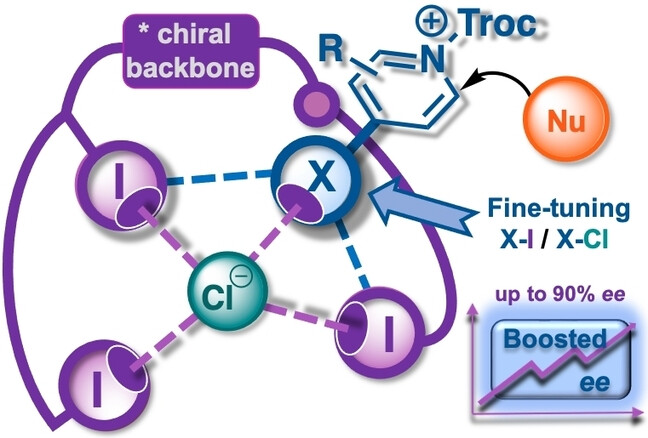
A new strategy towards boosted enantioselectivities in primary halogen-bonding catalysis is presented. Fine-tuned multiple halogen–halogen interactions between the substrate and halogen-bond (XB)-donor catalyst, through both the electron cloud (Lewis base site) and the sigma (σ)-hole site of the incorporated halogen substituents, allows enantioselectivities of up to 90 % ee in model anion-binding-catalyzed dearomatization reactions.
Protein Dynamics | Hot Paper
Decoding Protein Dynamics in Cells Using Chemical Cross-Linking and Hierarchical Analysis
- First Published: 05 July 2023
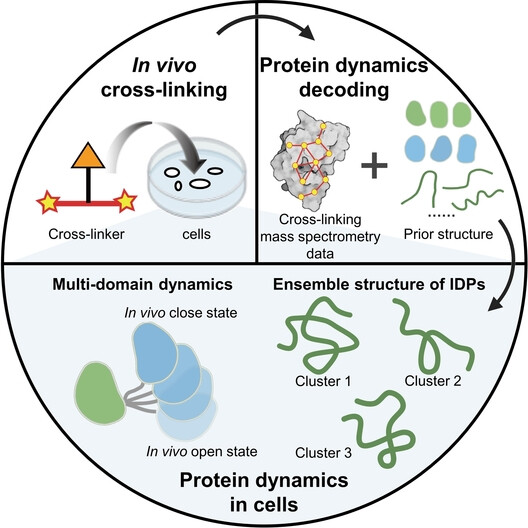
Our study presents a hierarchical strategy using in vivo cross-linking mass spectrometry to decode dynamic protein conformations within cells. By integrating prior structural information and utilizing diverse structure calculation algorithms, we accurately characterize dynamic conformations of multi-domain proteins and intrinsically disordered proteins. This comprehensive approach enhances our understanding of molecular mechanisms that drive protein functions within cellular environments.
Natural Products
Total Synthesis and Structural Plasticity of Kratom Pseudoindoxyl Metabolites
- First Published: 18 June 2023
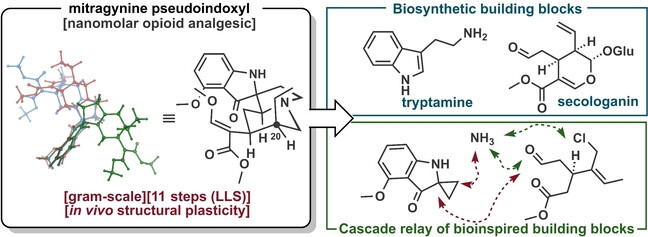
Although opioids have been used in the treatment of pain for centuries, they cause various adverse effects and addiction. Recently, kratom alkaloids emerged as promising analgesic alternatives for pain management with considerably fewer side effects. The first scalable total synthesis of mitragynine pseudoindoxyl, the most potent atypical opioid kratom metabolite, is now reported, as well as the discovery of its structural plasticity.
Conductive MOFs
Integrated Soft Porosity and Electrical Properties of Conductive-on-Insulating Metal-Organic Framework Nanocrystals
- First Published: 21 May 2023
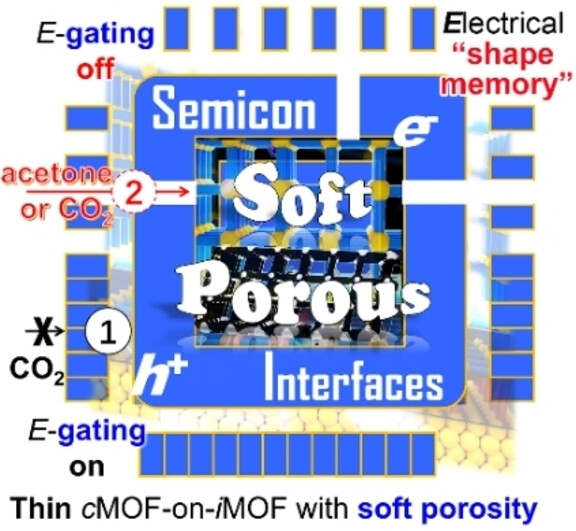
Owing to the integration of soft porosity and electrical properties, conductive-on-insulating metal–organic framework (cMOF-on-iMOF) heterostructured nanocrystals (with the semiconductive soft porous interfaces) show enhanced selective sorption toward CO2, electrical gating, and “shape memory” effects for the guest responsive iMOF core, as revealed by operando synchrotron measurements.
CO2 Reduction
MXene-Regulated Metal-Oxide Interfaces with Modified Intermediate Configurations Realizing Nearly 100% CO2 Electrocatalytic Conversion
- First Published: 05 July 2023
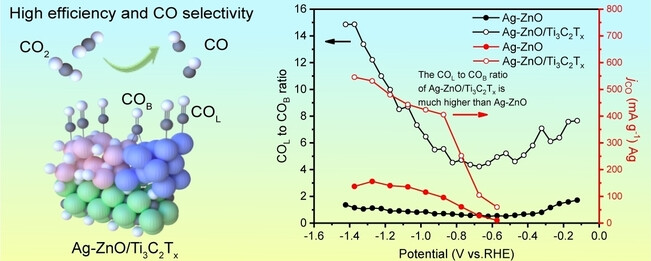
Highly efficient electrocatalytic reduction of CO2 to CO is achieved by Ag nanodomains loaded on ZnO porous nanobelts coupled with high electronic conductivity MXene (Ag−ZnO/Ti3C2Tx). The unique Ti3C2Tx-regulated Ag−ZnO interfaces can modulate the formation and configuration of *CO intermediates (eg. linear- or bridge-bonded CO), which is suitable for highly selective and efficient electrochemical CO2 reduction (eCO2R).
Nickel Catalysis
Ligand-Enabled NiII-Catalyzed Hydroxylarylation of Alkenes with Molecular Oxygen
- First Published: 11 July 2023

Ni-catalyzed hydroxylarylation of alkenes has been realized with highly efficient and excellent regioselectivity employing molecular oxygen as the oxidant and hydroxyl source. This reaction features mild conditions, broad substrate scope and incredible heterocycle compatibility, providing a variety of β-hydroxylamides, γ-hydroxylamides, β-aminoalcohols, γ-aminoalcohols, and 1,3-diols in high yields.
Allylic Alkylation | Hot Paper
Copper-Catalyzed Regiodivergent Internal Allylic Alkylations
- First Published: 16 June 2023

We report on a study of copper-catalyzed alkylation of internal allylic carbonates using functionalized alkyl and aryl Grignard reagents. The reactions exhibit good regioselectivity for either SN2 or SN2′ products, enabling the preparation of products with E-alkene selectivity. Density functional theory (DFT) calculations reveal the origins of the regioselectivity based on the different behaviors of homo- and heterocuprates.
NMR Spectroscopy
Cross-Polarization Schemes for Improved Heteronuclear Transfers Involving Labile Protons in Biomolecular Solution NMR
- First Published: 05 July 2023
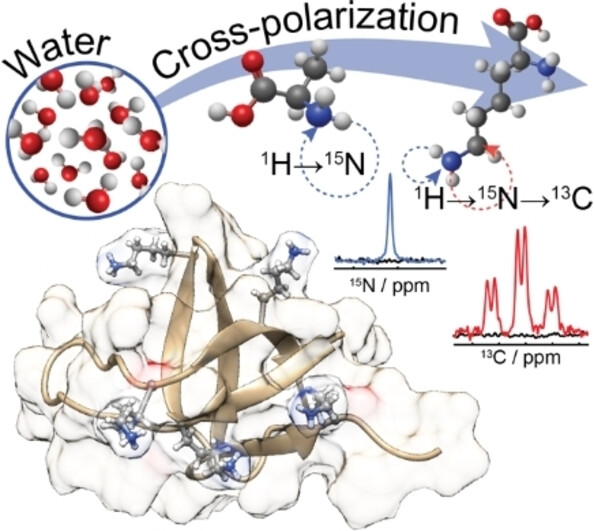
Cross-polarization approaches to enhance 1H→15N magnetization transfer processes involving labile protons are explored, which are capable of covering the large frequency ranges required to tackle such systems. Strategies based on both phase and frequency-modulated 1H waveforms are proposed, and their superior performance experimentally verified.
Organic Solar Cells | Hot Paper
Impact of Electrostatic Interaction on Non-radiative Recombination Energy Losses in Organic Solar Cells Based on Asymmetric Acceptors
- First Published: 11 July 2023
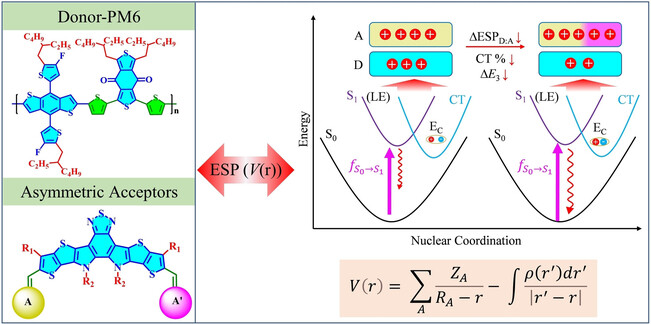
Two asymmetric acceptors, BTP-Cl and BTP-2Cl, were developed to study the relationship between the energy loss mechanism and molecular structure. The results demonstrate that the decreased surface electrostatic potential difference between asymmetric acceptor and donor reduces the charge transfer state ratio, thereby suppressing the non-radiative recombination energy loss.
Lipid Nanoparticles
Real-Time pH-Dependent Self-Assembly of Ionisable Lipids from COVID-19 Vaccines and In Situ Nucleic Acid Complexation
- First Published: 30 June 2023

The millisecond kinetic evolution of the ordered structure formation upon the complexation of ionisable lipid (SM-102), a novel structural-forming helper lipid (monoolein, MO) and nucleic acids (e.g., mRNA) are quantitatively investigated using in situ time-resolved small angle X-ray scattering coupled with rapid flow mixing, which will help deciphering the optimal ionisable lipid nanoparticle nanostructures for efficient gene delivery.
Luminescence
A Quadruple-Borylated Multiple-Resonance Emitter with para/meta Heteroatomic Patterns for Narrowband Orange-Red Emission
- First Published: 11 July 2023
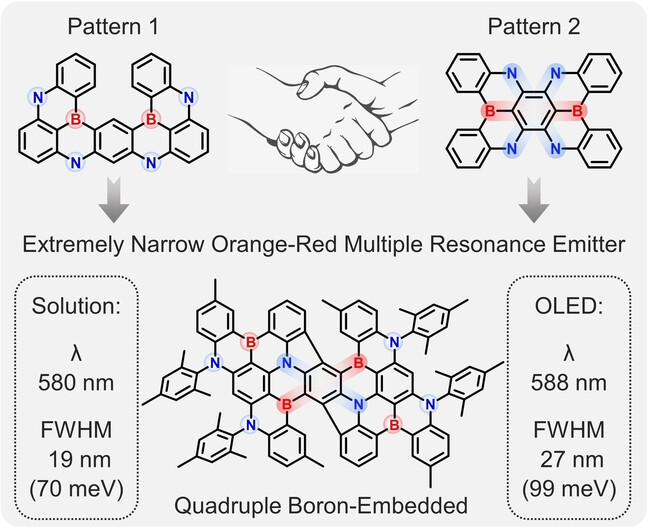
A hybrid pattern strategy is proposed, and a proof-of-concept multiple resonance emitter containing four boron atoms and six nitrogen atoms, namely, B4N6-Me, is designed. B4N6-Me realizes narrowband orange-red emission with an extremely narrow full width at half maximum of 19 nm (energy unit: 70 meV) and delivers state-of-the-art device performance with a maximum external quantum efficiency of 35.8 %.
Polymerization
A Supported Catalyst that Enables the Synthesis of Colorless CO2-Polyols with Ultra-Low Molecular Weight
- First Published: 08 May 2023

A strategy for constructing a supported catalyst featuring immobilization-enhanced proton tolerance for the synthesis of colorless ULMW CO2-polyols is proposed. The key design feature lies in the loading of aluminum aminoporphyrins on swellable Merrifield resin to afford the multiple cooperativity of porphyrins in the supported catalysts.
Ammonia Production
Supramolecular Enhancement of Electrochemical Nitrate Reduction Catalyzed by Cobalt Porphyrin Organic Cages for Ammonia Electrosynthesis in Water
- First Published: 06 July 2023
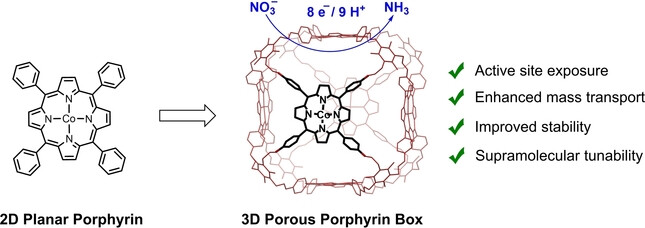
We present a supramolecular strategy for electrochemical nitrate reduction by augmenting porosity and electrochemically active sites as well as facilitating catalyst-substrate interactions. The resulting 3D architecture enables selective ammonia production in water with greater than 90 % Faradaic efficiency and turnover numbers exceeding 200,000, representing a 15-fold increase in activity and higher catalytic stability over its 2D counterpart.
DNA Nanopore
A Membrane Tension-Responsive Mechanosensitive DNA Nanomachine
- First Published: 12 July 2023

We developed a biomimetic DNA nanomachine inspired by the natural PIEZO channel. This nanomachine incorporates multifunctional molecular components onto DNA frameworks, allowing for the in situ measurement of membrane tension and membrane curvatures in real time, which opens up new avenues for studying cellular membrane dynamics.
Porous Materials
Locating Hydrogen Positions for COF-300 by Cryo-3D Electron Diffraction
- First Published: 04 July 2023
NMR Spectroscopy | Very Important Paper
Towards a Precise NMR Quantification of Acute Phase Inflammation Proteins from Human Serum
- First Published: 21 June 2023

1D Nuclear Magnetic Resonance (NMR) spectra of human serum show two characteristic signals originating from acute phase glycoprotein glycans, termed GlycA and B. We have unambiguously assigned them to Neu5Ac and GlcNAc moieties from N-glycans, respectively. They can be used for the simultaneous quantification of several acute phase inflammation proteins in 10–20 min. The method is illustrated with serum samples from COVID-19 patients.
Separator Engineering
Polyolefin-Based Separator with Interfacial Chemistry Regulation for Robust Potassium Metal Batteries
- First Published: 04 July 2023

K plating/stripping in potassium metal battery is regulated via interfacial chemistry engineering of commercial polyolefin-based separator using multiple functional units integrated in tailored metal organic framework (MOF). These functional units in the separator offer high elastic modulus, facilitate the dissociation of potassium salt, improve the K+ transfer number and homogenize the K+ flux at the electrode/electrolyte interface.
Solar Cells
Modular-Approach Synthesis of Giant Molecule Acceptors via Lewis-Acid-Catalyzed Knoevenagel Condensation for Stable Polymer Solar Cells
- First Published: 15 June 2023

A simple and cost-effective approach to accessing giant molecule acceptors is presented, employing a Lewis acid-catalyzed Knoevenagel condensation (or its silyl-mediated version). Notably, this new approach significantly expands the range of substrates that enables the use of readily available diboronated linkers. This methodology also offers a modular and robust synthesis of tailor-made donor-acceptors for a wide range of emerging technologies.
Asymmetric Catalysis
Copper-Catalyzed Chemoselective Asymmetric Hydrogenation of C=O Bonds of Exocyclic α,β-Unsaturated Pentanones
- First Published: 12 June 2023

An earth-abundant transition-metal copper catalyzed asymmetric hydrogenation of exocyclic α,β-unsaturated pentanones affording the corresponding chiral exocyclic allylic pentanols in up to 99 % yield and 96 % ee (enantiomeric excess) is reported. Mechanistic studies indicate that only the C=O bond is chemoselectively reduced and the reaction is promoted via the multiple attractive dispersion interactions between the Cu catalyst and substrate.
Single-Molecule Magnets | Hot Paper
Desolvation-Induced Highly Symmetrical Terbium(III) Single-Molecule Magnet Exhibiting Luminescent Self-Monitoring of Temperature
- First Published: 19 June 2023
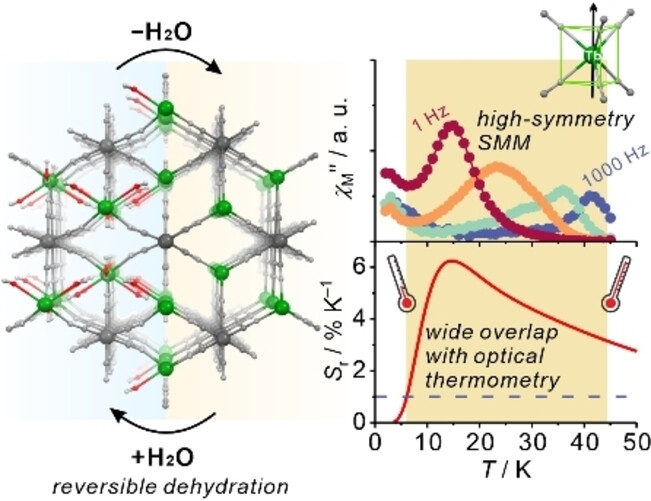
An optical thermometer was obtained by the dehydration of a cyanido-bridged TbIII−CoIII framework. By this transformation, the TbIII centers change geometry to high-symmetry trigonal prismatic. This also induces a strong magnetic anisotropy providing single-molecule magnet (SMM) behavior with an energy barrier of 594(18) cm−1 and a wide temperature overlap with optical thermometry.
DNAzyme | Very Important Paper
A Fluorogenic DNAzyme for A Thermally Stable Protein Biomarker from Fusobacterium nucleatum, a Human Bacterial Pathogen
- First Published: 05 July 2023
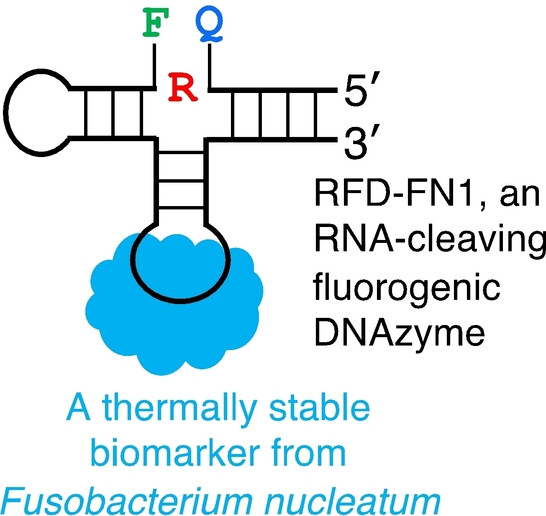
Fusobacterium nucleatum is a pathogenic bacterium associated with many poor human health conditions, such as gum disease, adverse pregnancy outcomes, and colorectal cancer. An RNA-cleaving DNAzyme, RFD-FN1, was isolated through in vitro selection to selectively recognize a heat stable biomarker of this bacterium, establishing the opportunity to develop diagnostic platforms for this pathogen.
Luminescent MOFs
Metal–Organic Frameworks | Hot Paper
A Photosensitizing Metal–Organic Framework as a Tandem Reaction Catalyst for Primary Alcohols from Terminal Alkenes and Alkynes
- First Published: 01 June 2023
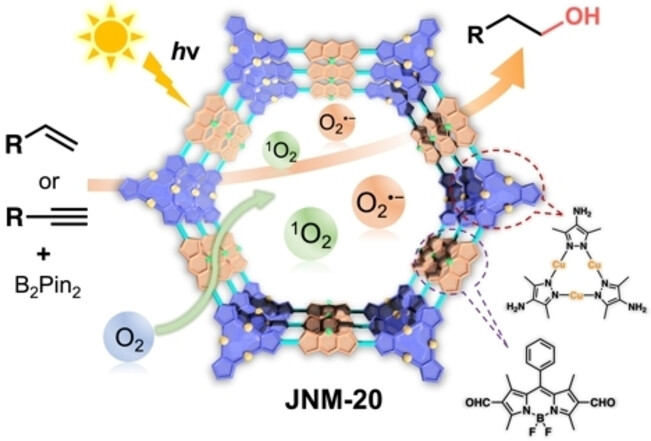
A Cu-CTU-based photosensitizing covalent metal–organic framework (JNM-20) was constructed. The MOF possessed broadband light absorption, excellent photoinduced charge-separation efficiency, and photochemical properties, allowing the production of primary alcohols from terminal alkenes and alkynes with excellent anti-Markovnikov selectivity, good overall yields, broad substrate compatibility, and good reusability via tandem catalysis.
Fluorination
Pentafluorocyclopropanation of (Hetero)arenes Using Sulfonium Salts: Applications in Late-Stage Functionalization
- First Published: 04 July 2023

An unprecedented sulfonium salt is presented, which under mild photochemical conditions, is able to transfer pentafluorocyclo-propenyl groups (C3F5−) at unfunctionalized positions of a number of (hetero)arenes. The reaction is compatible with a variety of functional groups, rendering this method a practical tool for future drug optimization campaigns.
Nanographenes
Extension of Non-alternant Nanographenes Containing Nitrogen-Doped Stone-Thrower-Wales Defects
- First Published: 08 July 2023
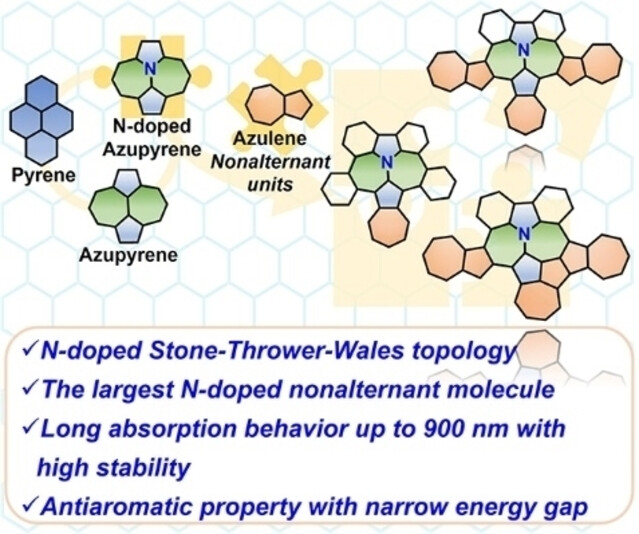
Saddle-shaped nanographenes containing N-doped Stone-Thrower-Wales topological defects have been synthesized that possess much narrower energy gaps than similar-sized N-doped nanographenes with six-membered rings. This work indicates that the introduction of non-alternant topologies is an efficient way to narrow the energy gap without extending the molecular size.
Polymerization | Hot Paper
Practical Synthesis of Dendritic Hyperbranched Polyacrylates and Their Topological Block Polymers by Organotellurium-Mediated Emulsion Polymerization in Water
- First Published: 11 July 2023
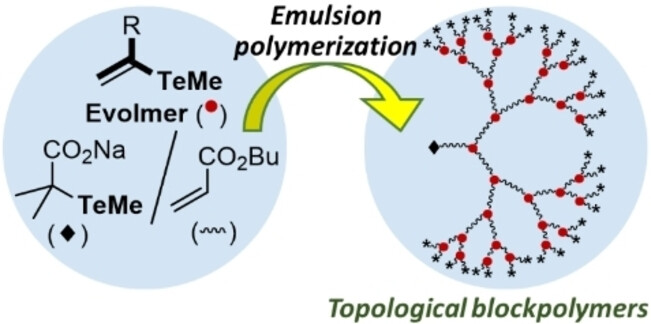
Copolymerization of a vinyl telluride and butyl acrylate (BA) using organotellurium-mediated radical polymerization (TERP) under emulsion conditions afforded structurally controlled hyperbranched poly(butyl acrylate)s (HBPBAs) as polymer particles dispersed in water. Various block copolymers consisting of different topologies were successfully synthesized using macro-TERP CTA with linear and HB structures.
Fused-Ring Systems | Hot Paper
Circumpentacene with Open-Shell Singlet Diradical Character
- First Published: 20 June 2023

A stable circumpentacene derivative was successfully synthesized and isolated in crystalline form. X-ray analysis, NMR and theoretical calculations revealed that it shows an open-shell diradical character and a dominant local aromatic character. The electronic structures of its dication and dianion were also studied.
Li Metal Batteries
Supramolecular Polymer Ion Conductor with Weakened Li Ion Solvation Enables Room Temperature All-Solid-State Lithium Metal Batteries
- First Published: 05 July 2023
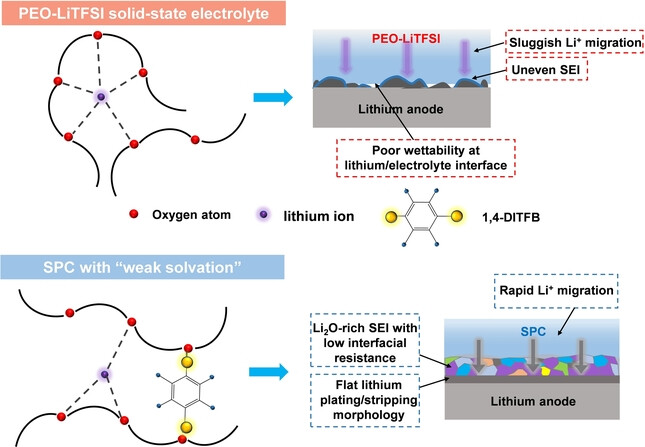
PEO-based electrolytes suffer from huge interfacial resistance, poor Li+ transport, and Li dendrite formation in all-solid-state lithium metal batteries (ASSLMBs) operating at around room-temperature. This work proposes the regulation of the Li+ solvation environment through halogen-bonding interaction and highlights the importance of “weak solvation” of Li+ in solid electrolytes for room temperature ASSLMBs.
Single-Molecule Magnets
Luminescent Single-Molecule Magnets as Dual Magneto-Optical Molecular Thermometers
- First Published: 07 July 2023
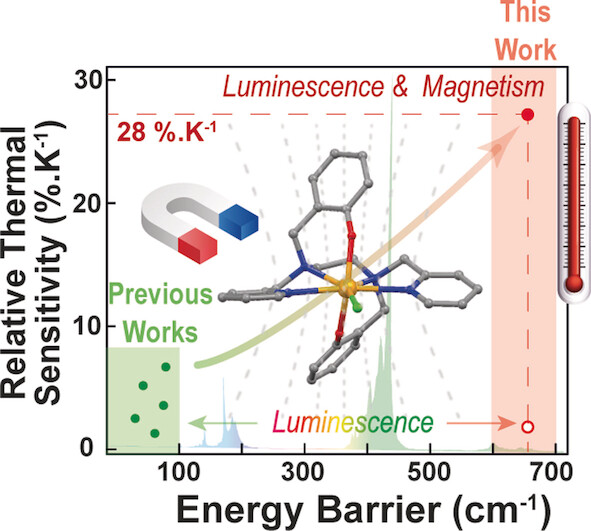
A dual magneto-optical thermometer is demonstrated using a high-performance single-molecule magnet. A multiparametric approach based on the independent magneto-optical readouts makes possible a 10-fold improvement in the relative thermal sensitivity of the thermometer, allowing the limitations inherent to Boltzmann thermometers to be overcome.
Metal–Organic Frameworks | Hot Paper
Generation and Stabilization of a Dinickel Catalyst in a Metal-Organic Framework for Selective Hydrogenation Reactions
- First Published: 07 July 2023

The synthesis of a robust, efficient, and reusable metal–organic framework (MOF) catalyst is described. Adaptive generation and stabilization of solution-inaccessible dinickel active sites, (bpy.−)NiII(μ2-H)2NiII(bpy.−) (bipyridine (bpy)), on MOF-253 yield a catalyst that efficiently semihydrogenates alkynes to afford (Z)-stilbenes and selectively hydrogenates C=C bonds in α,β-unsaturated aldehydes and ketones.
Amination | Hot Paper
Aqueous Electrolytes | Hot Paper
Strengthening Aqueous Electrolytes without Strengthening Water
- First Published: 05 July 2023
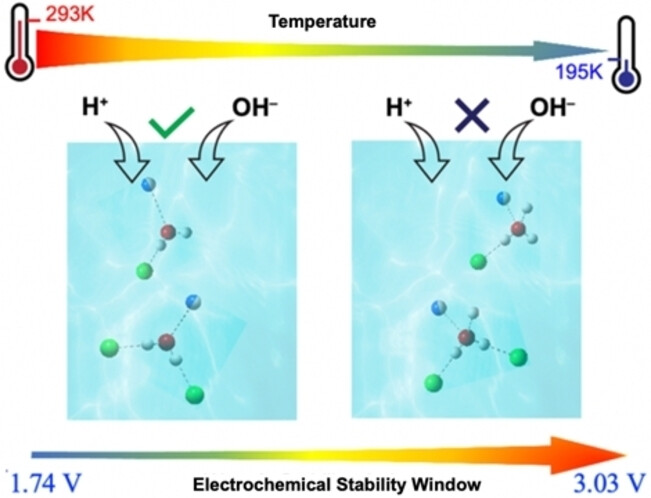
By examining liquid electrolytes that are more redox-inert at low temperatures, we postulate that the solvation energy of OH− and H+ also plays an essential role in water's electrolytic properties. This insight reshapes the current understanding of the water stability window and may guide the development of next-generation aqueous batteries for broader applications, providing affordable and clean energy to society in the future.
Lithium-Metal Batteries
Multiple Dynamic Bonds-Driven Integrated Cathode/Polymer Electrolyte for Stable All-Solid-State Lithium Metal Batteries
- First Published: 11 July 2023
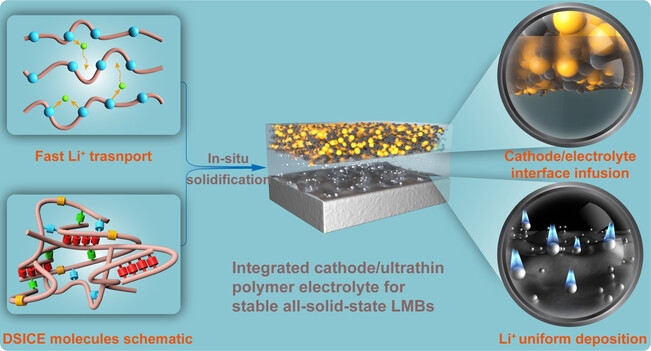
An integrated cathode/ultrathin polymer electrolyte for all-solid-state lithium-metal batteries was constructed driven by multiple dynamic bonds in a dynamic supramolecular ionic conductive elastomer (DSICE), thus achieving minimum thickness of pure polymer electrolyte and maximum compatibility of the solid electrolyte-electrodes interface at the molecular level. The well-constructed cells present superior cycling stability, excellent flexibility and safety.
Zn-Organic Batteries
In Situ Electrochemical Activation of Hydroxyl Polymer Cathode for High-Performance Aqueous Zinc–Organic Batteries
- First Published: 09 July 2023
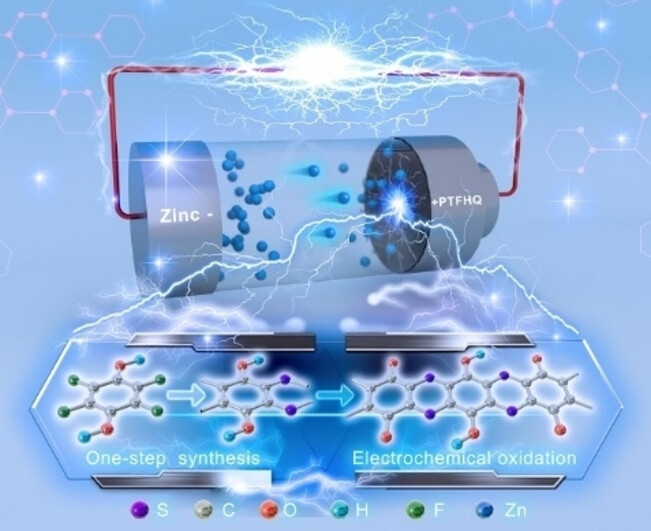
A hydroxyl polymer PTFHQ has been designed to obtain electrochemical activity through an in situ electrochemical activation process. The synergistic effects of the different functional groups (C=O, −OH, and −S−) and the unique Z-folded structure of the activated PTFHQ effectively improve its electrochemical activity and contribute to the rapid reaction kinetics, realizing the construction of high-performance zinc-organic batteries.
Spintronics
Chemical Approach Towards Broadband Spintronics on Nanoscale Pyrene Films
- First Published: 26 June 2023
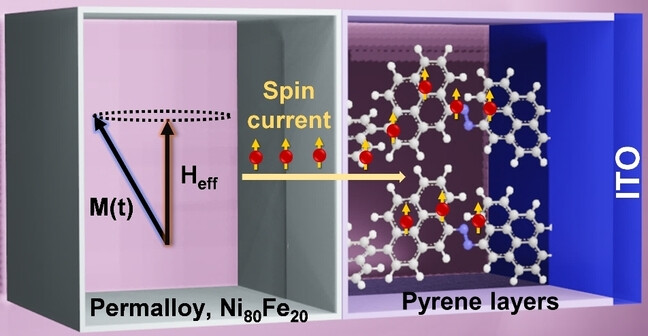
An electrochemically grafted pyrene oligomer is deposited on indium tin oxide (ITO), under a varied-thickness permalloy, to study broadband spintronics. High spin-mixing conductance and linewidth broadening reveal that pyrene can be an attractive nonmagnetic element for efficient spin-pumping at room temperature, a striking alternative to conventional but expensive heavy metals.
Perovskites
Hybrid Double Perovskite Derived Halides Based on Bi and Alkali Metals (K, Rb): Diverse Structures, Tunable Optical Properties and Second Harmonic Generation Responses
- First Published: 10 July 2023
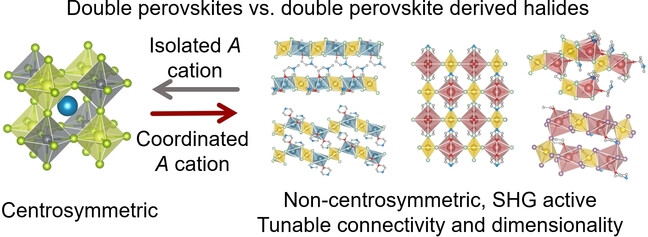
15 double perovskite derived halides A2BBiX6 are reported here, composed of organic cationic ligand A, forming diverse novel structures varying in dimensionalities. Various combinations of A, B and X create new structural types and tunable optical properties, where two-thirds of these phases are non-centrosymmetric and second-harmonic generation active.
Organic Electronics | Very Important Paper
Self-Doped n-Type Quinoidal Compounds with Good Air Stability and High Electrical Conductivity for Organic Electronics
- First Published: 04 July 2023

A closed-shell quinoidal backbone has been used to develop self-doped n-type conductive molecules (QnNs) with high electrical conductivities and good air stability. Intermolecular electron transfer from the amino groups to the quinoidal backbone was found to result in the self-doping. Applying the QnNs as the cathode interlayer (CIL) in organic solar cells led to an outstanding power conversion efficiency (PCE) of up to 18.2 %.
Luminescent Materials
Improved Thermal and Chemical Stability of Oxynitride Phosphor from Facile Chemical Synthesis for Vehicle Cornering Lights
- First Published: 27 June 2023
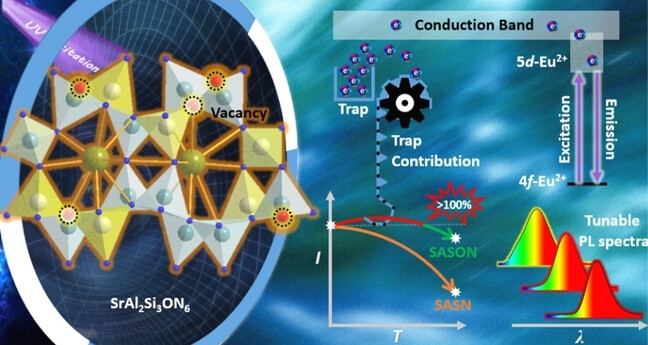
The oxynitride SrAl2Si3ON6:Eu2+ derived from the nitride SrAlSi4N7:Eu2+ is not only accessible by facile synthesis from air-stable raw materials SrCO3, AlN and Si3N4 but also achieves zero-thermal quenching, due to oxygen vacancies. Additionally, the SrAl2Si3ON6:Eu2+ phosphor shows high chemical stabilities against heat and water immersion.
Thermoelectric Energy Conversion
Proton-Coupled Electron Transfer Aided Thermoelectric Energy Conversion and Storage
- First Published: 08 July 2023
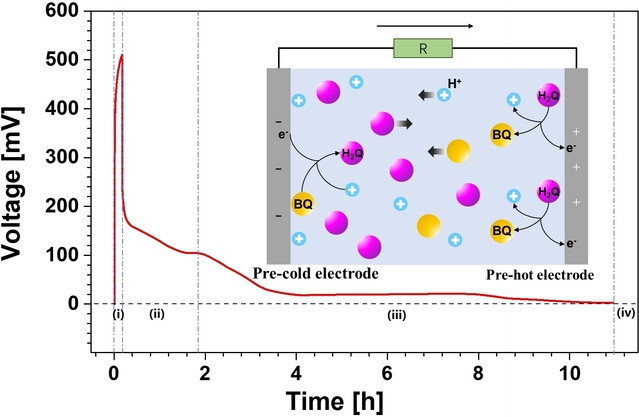
The combination of the Soret effect of protons and the classical proton-coupled electron transfer of benzoquinone (BQ) and hydroquinone (H2Q) in hydrogels results in overall and giant thermoelectric performance in terms of the thermopower, ionic conductivity, power factor, ionic Figure of merit. Above all, an energy-storage function is achieved by the BQ and H2Q redox couple after the removal of temperature difference.
Manganese Chemistry
Bis(N-Heterocyclic Carbene) Manganese(I) Complexes: Efficient and Simple Hydrogenation Catalysts
- First Published: 03 July 2023

Manganese(I) complexes bearing simple, non-bifunctional bis(NHC) ligands were investigated as hydrogenation catalysts. Applying these complexes with KHBEt3 as additive, various carboxylic acid esters and, additionally, ketones, nitriles, N-heteroarenes and alkenes were successfully hydrogenated. Mechanistic investigations by control experiments and DFT calculations indicate an inner-sphere mechanism and reveal the role of BEt3 as cocatalyst.
Aqueous Zn Batteries
Bulk-Phase Reconstruction Enables Robust Zinc Metal Anodes for Aqueous Zinc-Ion Batteries
- First Published: 06 July 2023
Chain-Walking | Hot Paper
Base-Modulated 1,3-Regio- and Stereoselective Carboboration of Cyclohexenes
- First Published: 10 July 2023

Introducing two remote functional groups into rings via chain-walking represents a new strategy to efficiently access multi-substituted saturated cyclic compounds. We report an unprecedented 1,3-cis-carboboration of cyclohexenes by nickel catalysis. The application of LiOMe as base plays a crucial role in the success of this reaction.
Fluorine Chemistry
Cobalt-Catalyzed Wagner–Meerwein Rearrangements with Concomitant Nucleophilic Hydrofluorination
- First Published: 06 July 2023

A cobalt-catalyzed reaction has been developed, which proceeds via hydrogen atom transfer and radical-polar crossover steps, to form a phenonium ion under non-acidic conditions. This cationic intermediate can be regioselectively fluorinated by a tetrafluoroborate anion to give 1,2-aryl migrated products. Evaluation of distinctly substituted phenonium ion intermediates demonstrated the constraints for good reactivity and high selectivity.
Carbonylation | Hot Paper
Low Pressure Carbonylation of Benzyl Carbonates and Carbamates for Applications in 13C Isotope Labeling and Catalytic CO2 Reduction
- First Published: 13 July 2023

Herein, an oxygen atom deletion strategy via sequential Pd-catalyzed decarboxylative carbonylation of carbonates and carbamates to afford esters and amides is reported. Operating under low pressures (near stoichiometric or substoichiometric), either 13C labeled products are accessed or a proof-of-concept that CO2 formed upon decarboxylation can be reduced in situ and reincorporated as CO is shown.
Metal-Organic Frameworks
Size- and Emission-Controlled Synthesis of Full-Color Luminescent Metal-Organic Frameworks for Tryptophan Detection
- First Published: 07 July 2023

Nano-luminescent metal–organic frameworks (LMOFs), with precise size control and emission colors from blue to near-infrared, were prepared using 2,1,3-benzothiadiazole and its derivative based ditopic- and tetratopic carboxylic acids as the emission sources. The nano-LMOFs exhibit turn-off and turn-on responses for highly selective and sensitive detection of tryptophan over nineteen other natural amino acids.
Dyes/Pigments
On-Demand Control of Short-Wave Infrared Light Transparency Based on Stimuli-Responsive Association of Tetrathiafulvalene Radical Cations
- First Published: 12 July 2023
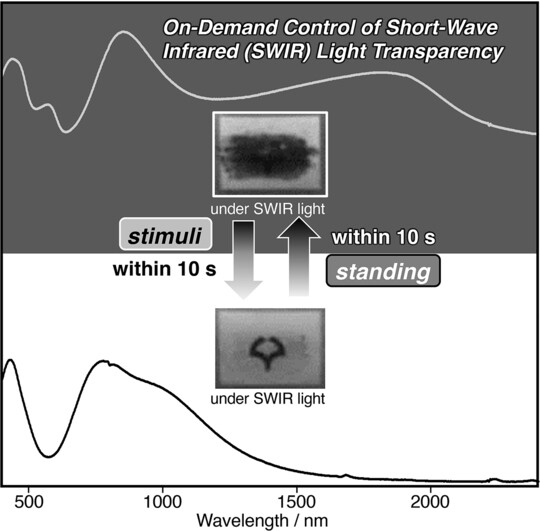
An ensemble consisting of the solid form of the tetrathiafulvalene radical cation and bis(trifluoromethanesulfonyl)imide showed rapid and reversible changes in short-wave infrared light (>1000 nm) transparency upon weak external stimulation. This behavior originated from the conversion of the association structures of the radical cation from columnar arrangements of π-dimers into isolated π-dimers.
Posttranslational Modifications
Association of Radical Chemistry with LanD Flavoprotein Activity for C-Terminal Macrocyclization of a Ribosomal Peptide by Formation of an Unsaturated Thioether Residue
- First Published: 11 July 2023

LanD flavoproteins catalyze oxidative decarboxylation of the C-terminal Cys residue of a peptide to produce a reactive enethiol. This enzyme activity can couple with radical S-adenosylmethionine chemistry to provide a new unsaturated thioether residue, S-[2-aminovinyl]-3-carbamoylcysteine, by conjugation of the enethiol with Cβ of the Asn residue in the C-terminal NxxC motif of a peptide for macrocyclization.
Hydrogen Evolution | Very Important Paper
Cooperative Ni(Co)-Ru-P Sites Activate Dehydrogenation for Hydrazine Oxidation Assisting Self-powered H2 Production
- First Published: 10 July 2023
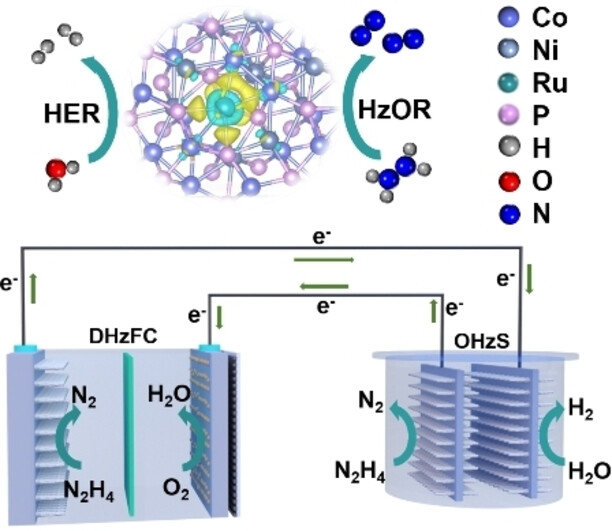
Unique atomic Ni(Co)−Ru−P interfacial sites on a matrix of NiCoP nanowire arrays were designed as highly active and stable catalysts for alkaline hydrazine oxidation reaction (HzOR) and hydrogen evolution reaction (HER). A self-powered H2 production system utilizing an overall hydrazine splitting device driven by a direct hydrazine fuel cell achieved a promising rate of 24.0 mol h−1 m−2.
Membranes
Voltage-Mediated Water Dynamics Enables On-Demand Transport of Sugar Molecules in Two-Dimensional Channels
- First Published: 11 July 2023
Magnetism in MOFs | Hot Paper
A Paramagnetic Compass Based on Lanthanide Metal-Organic Framework
- First Published: 10 July 2023
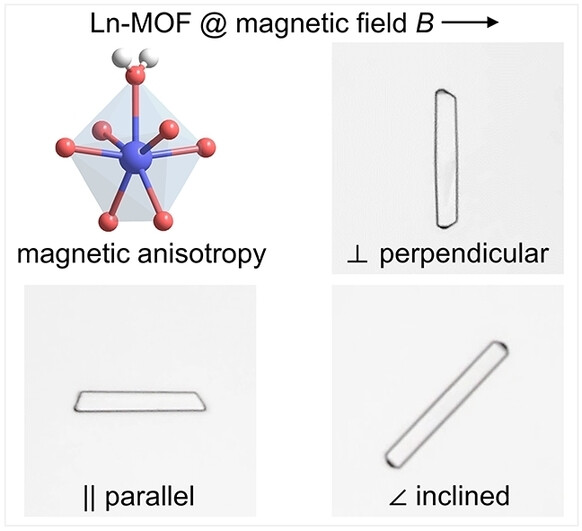
Paramagnetic lanthanide metal–organic framework (Ln-MOF) crystals show unexpected compass-like alignments at low fields (∼mT). The magnetic alignments originate from the symmetry-related summation of Ln-ions’ molecular anisotropy, among which the perpendicular, parallel, and inclined alignments can be manipulated and switched by crystal structures and chemical environments.
Biocatalysis
Reversing the Enantioselectivity of Enzymatic Carbene N−H Insertion Through Mechanism-Guided Protein Engineering
- First Published: 01 June 2023
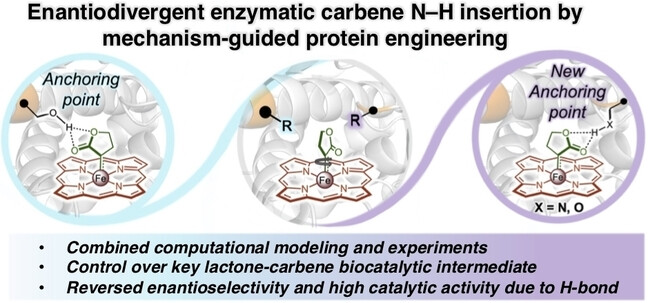
Computational modelling was employed to rationally guide protein engineering toward controlling the accessible conformations of a key lactone-carbene (LAC) intermediate in the enzyme active site by installing a new H-bond anchoring point. This H-bonding interaction controls the relative orientation of the fleeting carbene intermediate, orienting it for an enantioselective N-nucleophilic attack by the amine substrate.
Rotaxanes | Hot Paper
Rotaxane Formation of Multicyclic Polydimethylsiloxane in a Silicone Network: A Step toward Constructing “Macro-Rotaxanes” from High-Molecular-Weight Axle and Wheel Components
- First Published: 17 July 2023
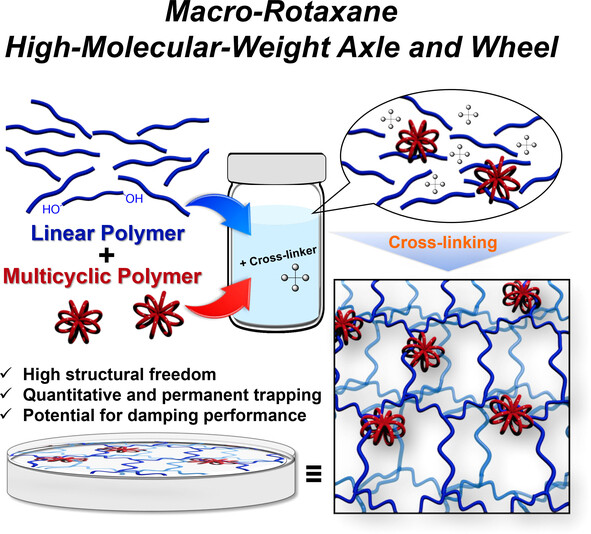
“Macro-rotaxanes” which consist of high-molecular-weight axle and wheel components were constructed by in situ cross-linking of linear polymers in the presence of multicyclic polymers. Extending the concept of topological trapping to multicyclic showed that multicyclic polymers with more cyclic units and larger ring sizes can be quantitatively trapped, with up to 50 wt % successfully topologically trapped as macro-rotaxanes.
Communications
Photoredox Catalysis | Very Important Paper
Observing the Entry Events of a Titanium-Based Photoredox Catalytic Cycle in Real Time
- First Published: 19 June 2023
Rearrangements
Toward a Formyl-to-Phenyl Conversion: An Unexpected Photochemical Fulvene Rearrangement
- First Published: 17 June 2023
Biosynthesis
Directed Evolution of Piperazic Acid Incorporation by a Nonribosomal Peptide Synthetase
- First Published: 16 June 2023

Efficient directed evolution protocols for nonribosomal peptide synthetases are needed to adapt the structures of antibiotic peptides for the fight against antimicrobial resistance. Here, an easily reproducible directed evolution protocol was used to reprogram the synthetase for the antibiotic peptide gramicidin S. A few mutations were sufficient to incorporate the non-standard building block piperazic acid instead of proline with perfect specificity.
Main Group Chemistry
Synthesis of Cobalt-Tin and -Lead Tetrylidynes—Reactivity Study of the Triple Bond
- First Published: 03 July 2023

Tetrylidynes featuring a triple bond between cobalt and tin or lead have been synthesized via a substitution reaction between anionic cobalt complex [Co(PMe3)4]− and halides of tin and lead. The cobalt stannylidyne adds two equivalents of water to give a cobalt dihydride moiety and tin dihydroxide unit. In reaction with carbon dioxide the stannylidyne forms a cobalt carbonyl complex featuring a carbonate ligand coordinated at tin.
Dehydrogenation
Direct Regioselective Dehydrogenation of α-Substituted Cyclic Ketones
- First Published: 20 June 2023

A highly regioselective, one-step dehydrogenation of α-substituted cyclic ketones in the presence of 2,3-dichlorobenzo-5,6-dicyano-1,4-benzoquinone is described. The reaction proceeds via phosphoric acid-based enol catalysis and provides access to several α-aryl and α-alkyl substituted α,β-unsaturated ketones.
Fused-Ring Systems
Tetraazacoronenes and Their Dimers, Trimers and Tetramers
- First Published: 06 July 2023
Computational Chemistry | Hot Paper
Origin of the Hydrophobic Behaviour of Hydrophilic CeO2
- First Published: 03 April 2023
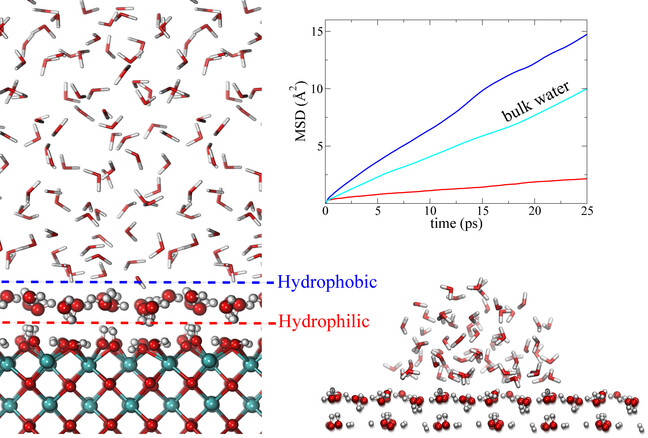
By ab-initio molecular dynamics simulations we show that the CeO2(100) surface, despite its strongly hydrophilic nature, exhibits hydrophobic behaviour when immersed in water. This effect is induced by the first water layer that is in immediate contact with the hydroxylated CeO2(100) surface, and it is manifested by a measurable water contact angle and a considerable diffusion enhancement of the confined liquid water as compared with bulk water.
Self-Assembly
Bis-Alkylureido Imidazole Artificial Water Channels
- First Published: 12 July 2023
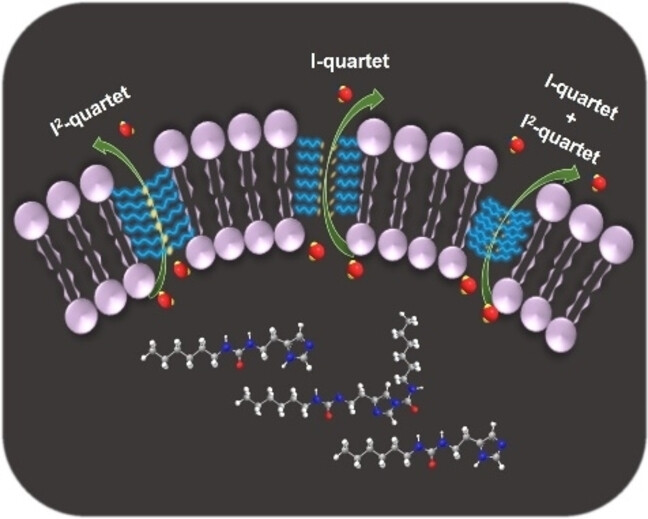
Bis-alkylureido-imidazoles have been used to construct artificial water channels presenting increased water transport and lower H+ translocation activities than monosubstituted I-quartets across lipid bilayers. These studies shed light on potential mechanisms of biological proton/water translocation and inspire novel designs for engineering artificial water channels membranes.
Homogeneous Catalysis
Titanium Salalen Catalyzed Enantioselective Benzylic Hydroxylation
- First Published: 27 June 2023

A cis-1,2-diaminocyclohexane (cis-DACH) Ti salalen complex (R=NO2) was shown to efficiently catalyze enantioselective benzylic hydroxylations with H2O2 as oxidant. Tetralin and indane derivatives are converted to benzylic alcohols with up to 98 % ee. The overoxidation to ketone is negligible. Epoxidation reactions are similarly effective, with 1-decene being converted to its epoxide in 90 % yield and 94 % ee, at 0.1 mol% catalyst loading.
Atropisomers | Very Important Paper
Dynamic Kinetic Resolution of 2-(Quinolin-8-yl)Benzaldehydes: Atroposelective Iridium-Catalyzed Transfer Hydrogenative Allylation
- First Published: 30 June 2023
Foldamers
Non-Covalent Interactions Enforce Conformation in Switchable and Water-Soluble Diketopiperazine-Pyridine Foldamers
- First Published: 06 July 2023

This study introduces a diketopiperazine-based foldamer design that maintains its conformation in challenging environments, making it a promising platform for future therapeutic applications. The conformation is enforced by juxtaposition of dipolar repulsion and torsional strain interactions. The foldamers show dynamic switching capabilities, responding to external stimuli and paving the way for new applications in mimicking biological systems.
Gold Catalysis
Gold(I)-Catalyzed Bis-Cyclization of Allenynes for the Synthesis of Strained and Planar Polycyclic Compounds
- First Published: 04 July 2023

A gold-catalyzed cascade cyclization of naphthalene-tethered allenynes gave 4H-cyclopenta[def]phenanthrene (CPP) derivatives. The reaction proceeds through the nucleophilic reaction of an alkyne with the activated allene to generate a vinyl cation intermediate followed by arylation. Selective formation of CPP and dibenzofluorene derivatives using aryl-substituted substrates, depending on the reaction conditions, is also presented.
Cluster Compounds
Bonding and Acidity of the Formal Hydride in the Prototypical Au9(PPh3)8H2+ Nanocluster
- First Published: 07 July 2023
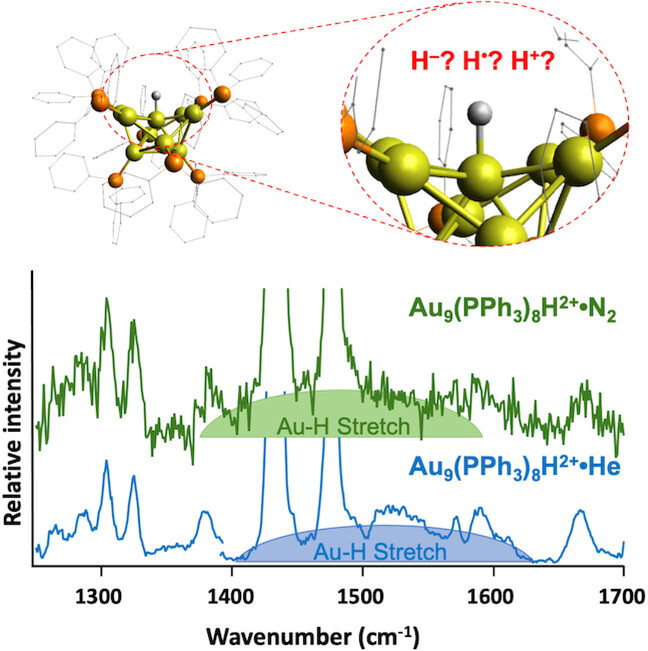
Surface-bound hydrogen has been shown to improve chemical reactivity and selectivity in gold clusters. However, the chemical properties and reactivity of these hydrogen atoms is difficult to directly probe. We show for the prototypical cluster Au9(PPh3)8H2+ that the hydrogen bonds to the cluster in a manner somewhere between a covalent bond and a particle in a box, and that it is likely to behave as a moderate acid.
Photocatalytic H2O Splitting
Regulation of d-Band Centers in Localized CdS Homojunctions through Facet Control for Improved Photocatalytic Water Splitting
- First Published: 13 July 2023
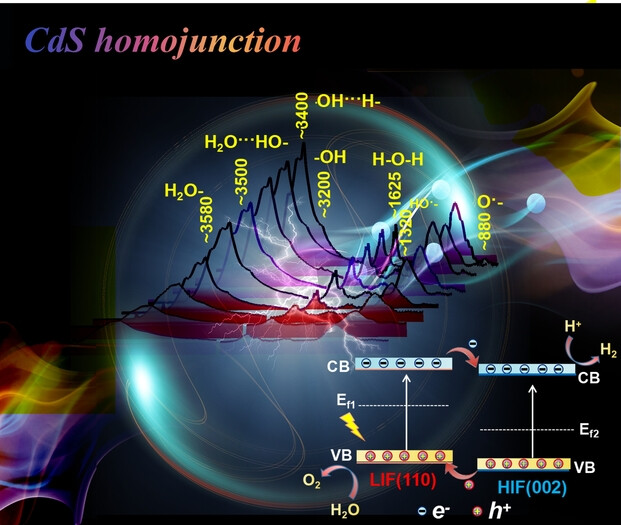
The d-band center of localized CdS homojunctions has been regulated by high and low index facet control for chemically adsorbing and activating key intermediates in water overall splitting reaction. Photoexcited electrons and holes are separately transferred to reductive (002) and oxidative (110) facets within localized field to dehydrogenate *-OH and couple *-O for hydrogen (H2) and oxygen evolution at a solar-to-H2 efficiency of 2.20 %.
Li-Ion Batteries
Boosting Fe Cationic Vacancies with Graphdiyne to Enhance Exceptional Pseudocapacitive Lithium Intercalation
- First Published: 05 July 2023
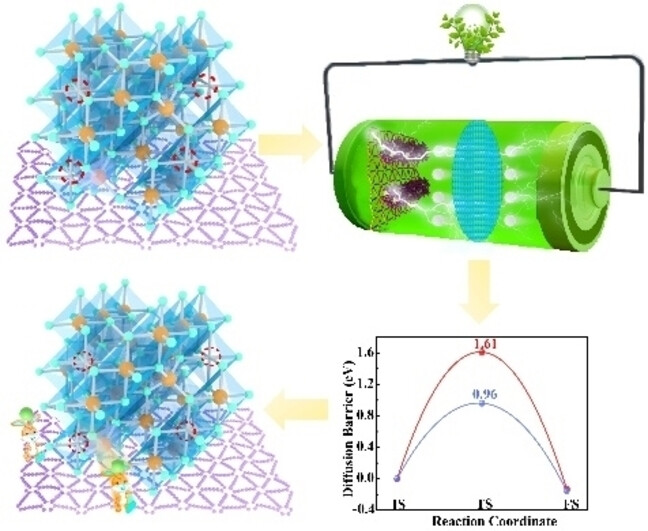
Graphdiyne as anode material in Li-ion batteries can realize effective charge transfer to induce the formation of a high number of Fe vacancies with uniform dispersion. The Fe vacancies modulate charge distribution, serve as active sites and enhance electron-ion transportation, thereby displaying robust pseudocapacitive behavior. The Fe vacancies also reduce the diffusion energy barrier and adsorption energies, leading to a superior battery performance.
Mechanochemistry
Mechanochemical Mediated Coexistence of B←N Coordination and Hydrogen Bonding
- First Published: 26 June 2023
Lewis Pairs
Dispersion Energy-Stabilized Boron and Phosphorus Lewis Pairs
- First Published: 10 July 2023
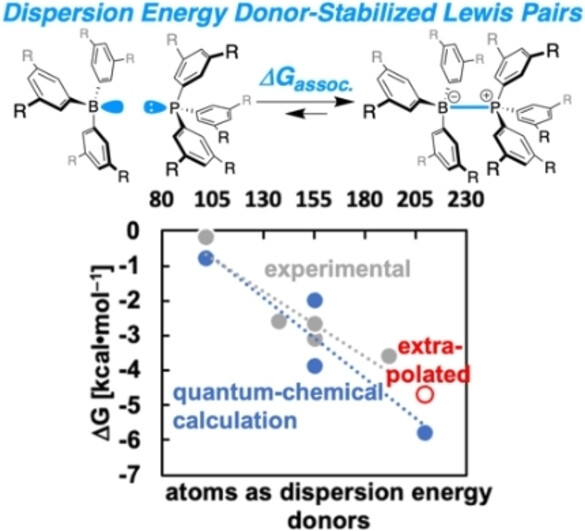
The association constants of triaryl boron- and triaryl phosphorus-derived Lewis pairs equipped with dispersion energy donors were determined at various temperatures. The extracted thermodynamic parameters were used to challenge state-of-the-art quantum mechanical methods and led to the development of an efficient workflow to calculate constants for weakly bound Lewis pairs.
Polymerization | Hot Paper
Stereospecific Radical Polymerization of a Side-Chain Transformable Bulky Acrylamide Monomer and Subsequent Post-Polymerization Modification for Syntheses of Isotactic Polyacrylate and Polyacrylamide
- First Published: 03 July 2023
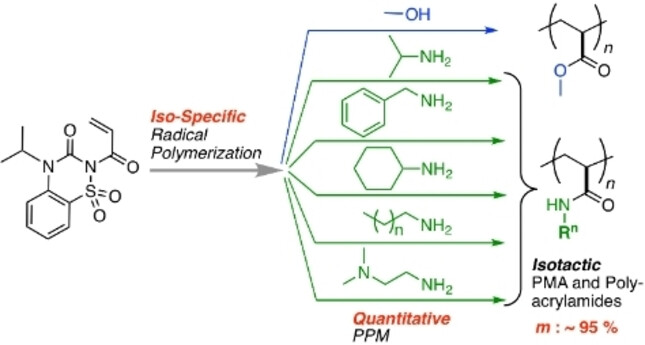
A pendant-transformable bulky acrylamide monomer was designed for the synthesis of a series of isotactic poly(alkyl acrylamide)s and poly(methyl acrylate). The stereospecific radical polymerization of the special monomer was controlled under diluted condition at lower temperature. The pendant underwent subsequent quantitative aminolysis and alcoholysis post-polymerization modification.




